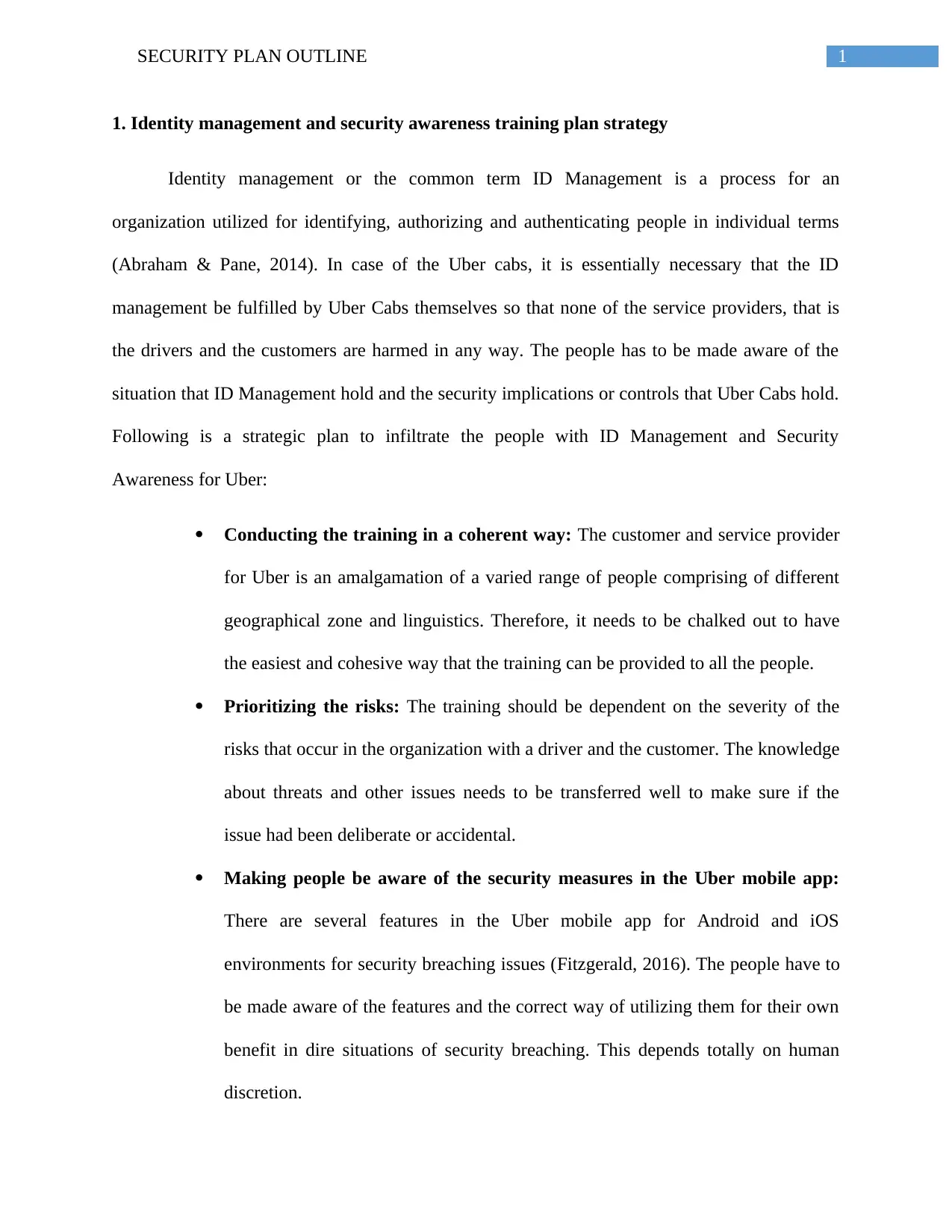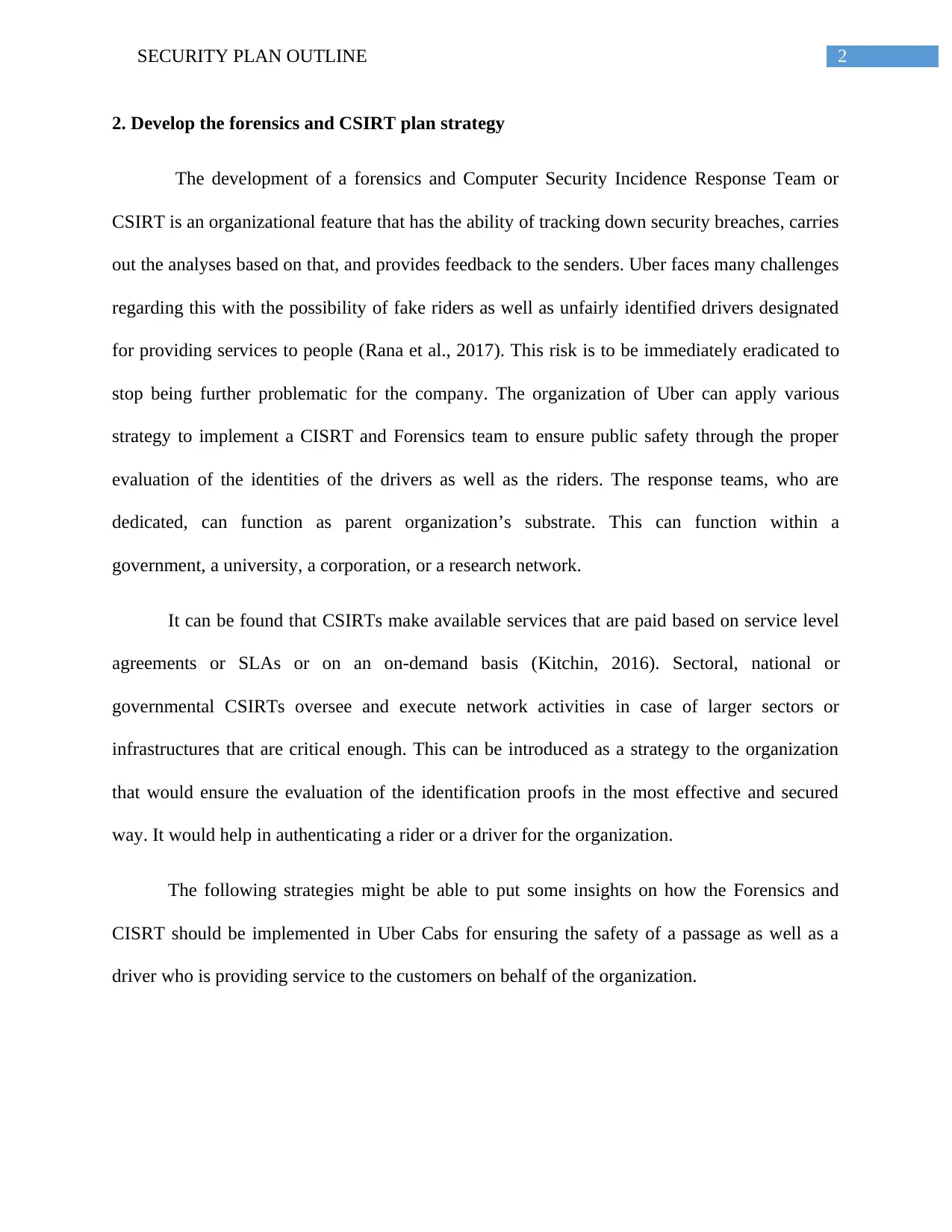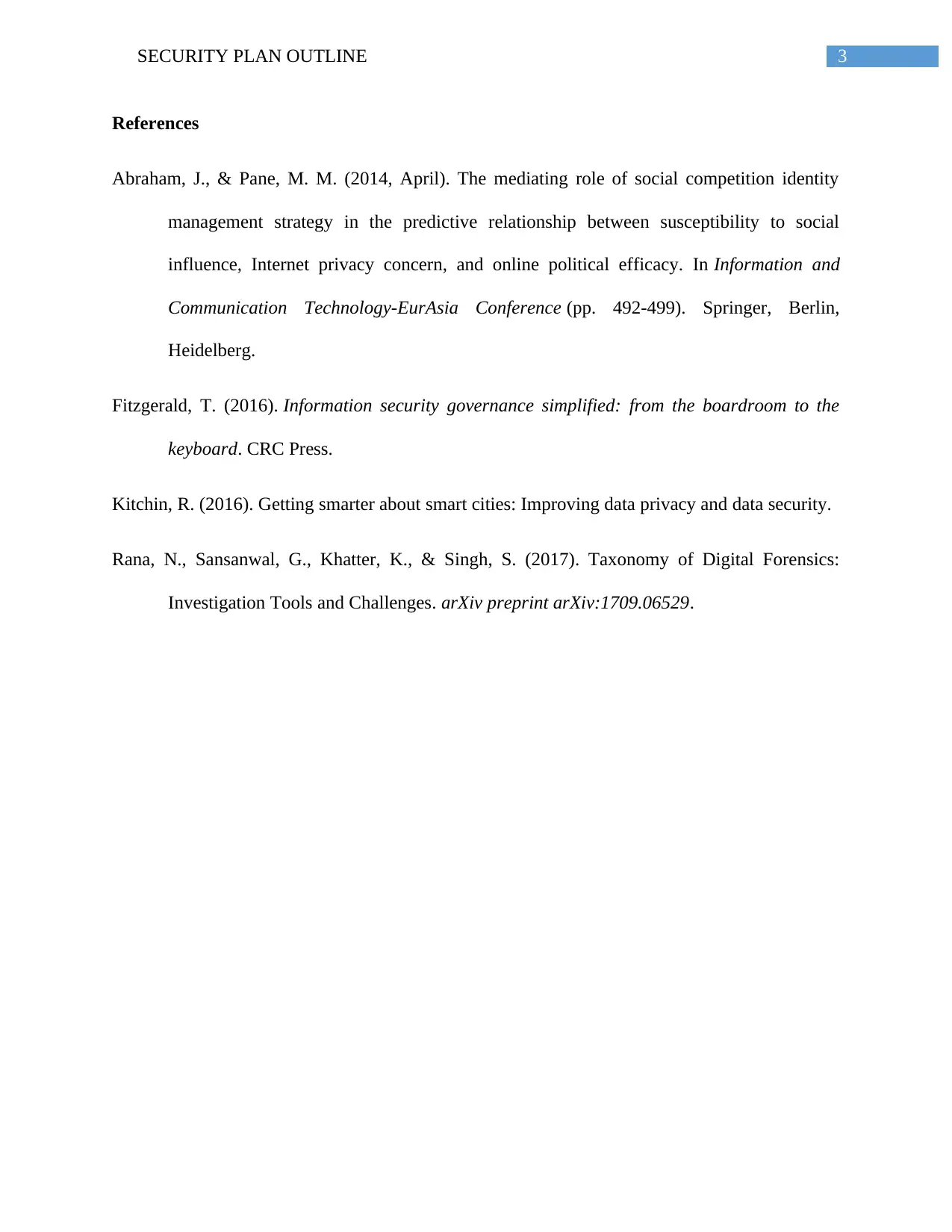Uber IT Security Plan Outline: Forensics and CSIRT Strategy
VerifiedAdded on 2023/06/09
|4
|792
|393
Report
AI Summary
This report provides a security plan outline for Uber, focusing on key areas such as identity management, security awareness training, and the development of forensics and Computer Security Incident Response Team (CSIRT) strategies. The identity management section emphasizes the importance of authenticating users (drivers and customers) and proposes coherent training methods to educate them about security measures within the Uber app. The CSIRT strategy discusses how to track and analyze security breaches, highlighting the need to address issues like fake riders and unfairly identified drivers. By implementing these strategies, Uber can enhance the safety and security of its services, ensuring the protection of both its customers and service providers. The document concludes with a list of references used in formulating the security plan outline.
1 out of 4











![[object Object]](/_next/static/media/star-bottom.7253800d.svg)